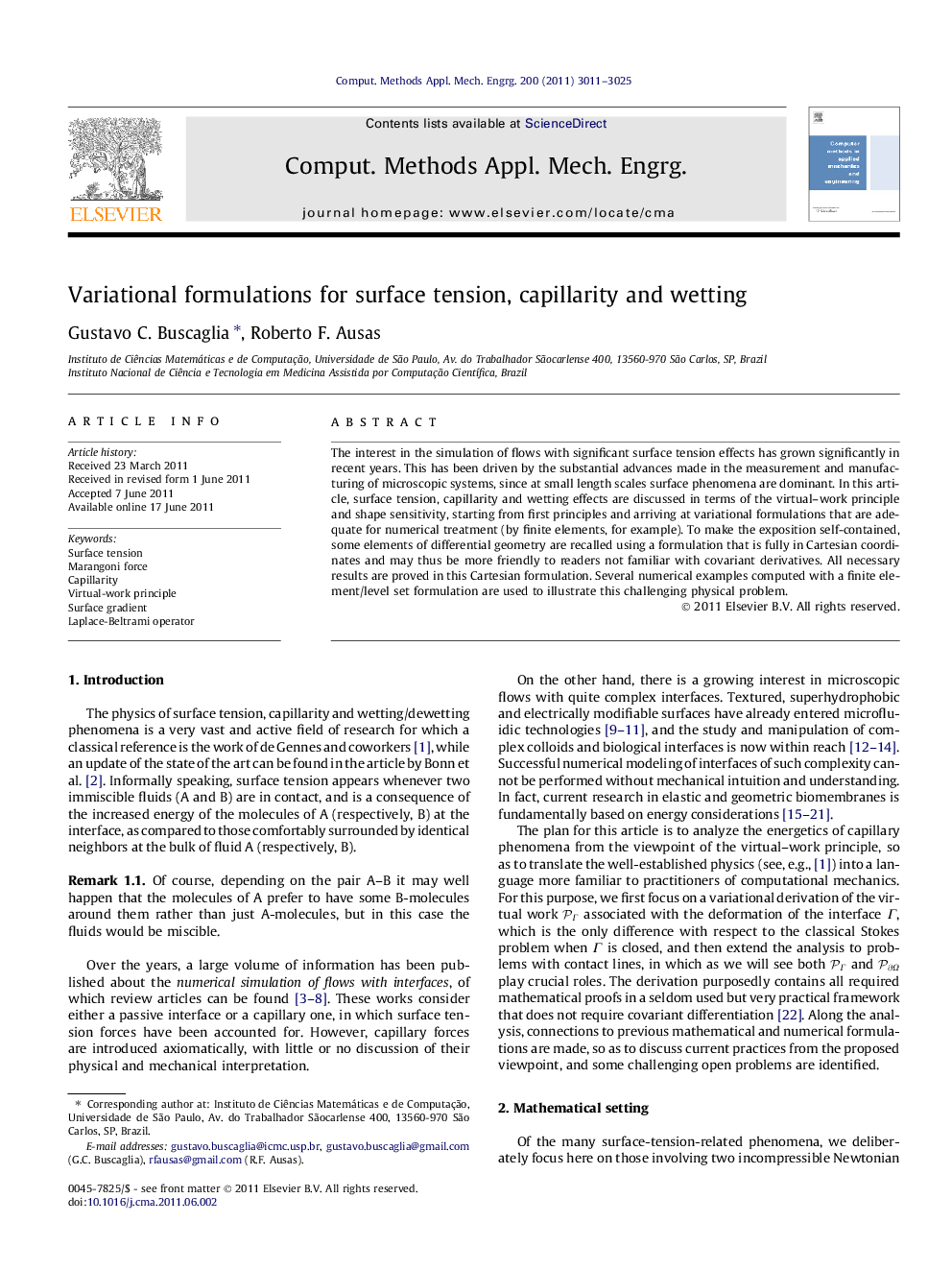| Article ID | Journal | Published Year | Pages | File Type |
|---|---|---|---|---|
| 498492 | Computer Methods in Applied Mechanics and Engineering | 2011 | 15 Pages |
The interest in the simulation of flows with significant surface tension effects has grown significantly in recent years. This has been driven by the substantial advances made in the measurement and manufacturing of microscopic systems, since at small length scales surface phenomena are dominant. In this article, surface tension, capillarity and wetting effects are discussed in terms of the virtual–work principle and shape sensitivity, starting from first principles and arriving at variational formulations that are adequate for numerical treatment (by finite elements, for example). To make the exposition self-contained, some elements of differential geometry are recalled using a formulation that is fully in Cartesian coordinates and may thus be more friendly to readers not familiar with covariant derivatives. All necessary results are proved in this Cartesian formulation. Several numerical examples computed with a finite element/level set formulation are used to illustrate this challenging physical problem.
► Capillarity and wetting are reviewed and elaborated on in a variational framework. ► The mathematical formulation, in Cartesian coordinates, avoids covariant differentiation. ► Formulation well suited for the finite element method. ► Discussion on localized dissipation at the contact line and dynamic contact angle. ► Numerical experiments using level set finite element method with Laplace–Beltrami curvature.
